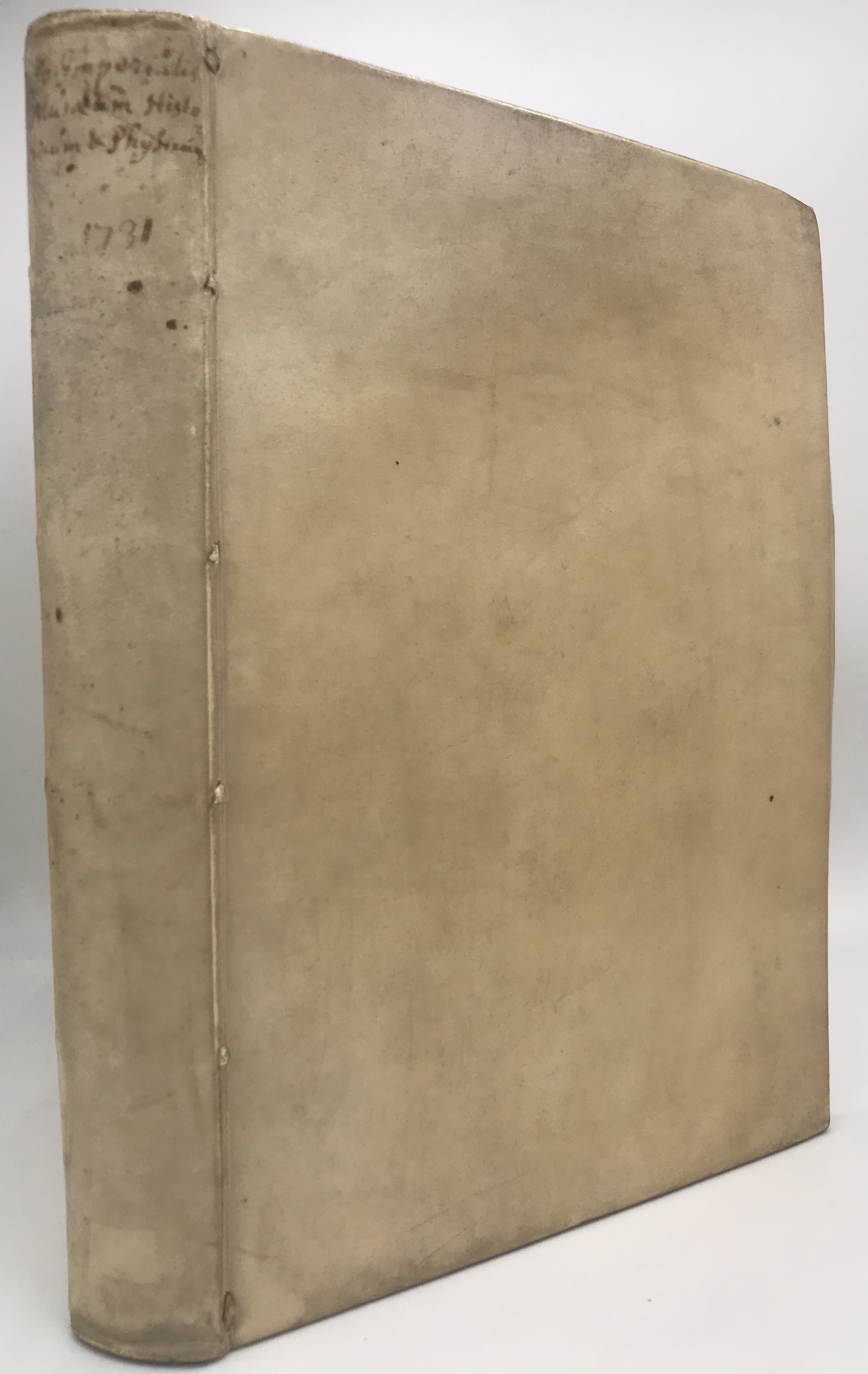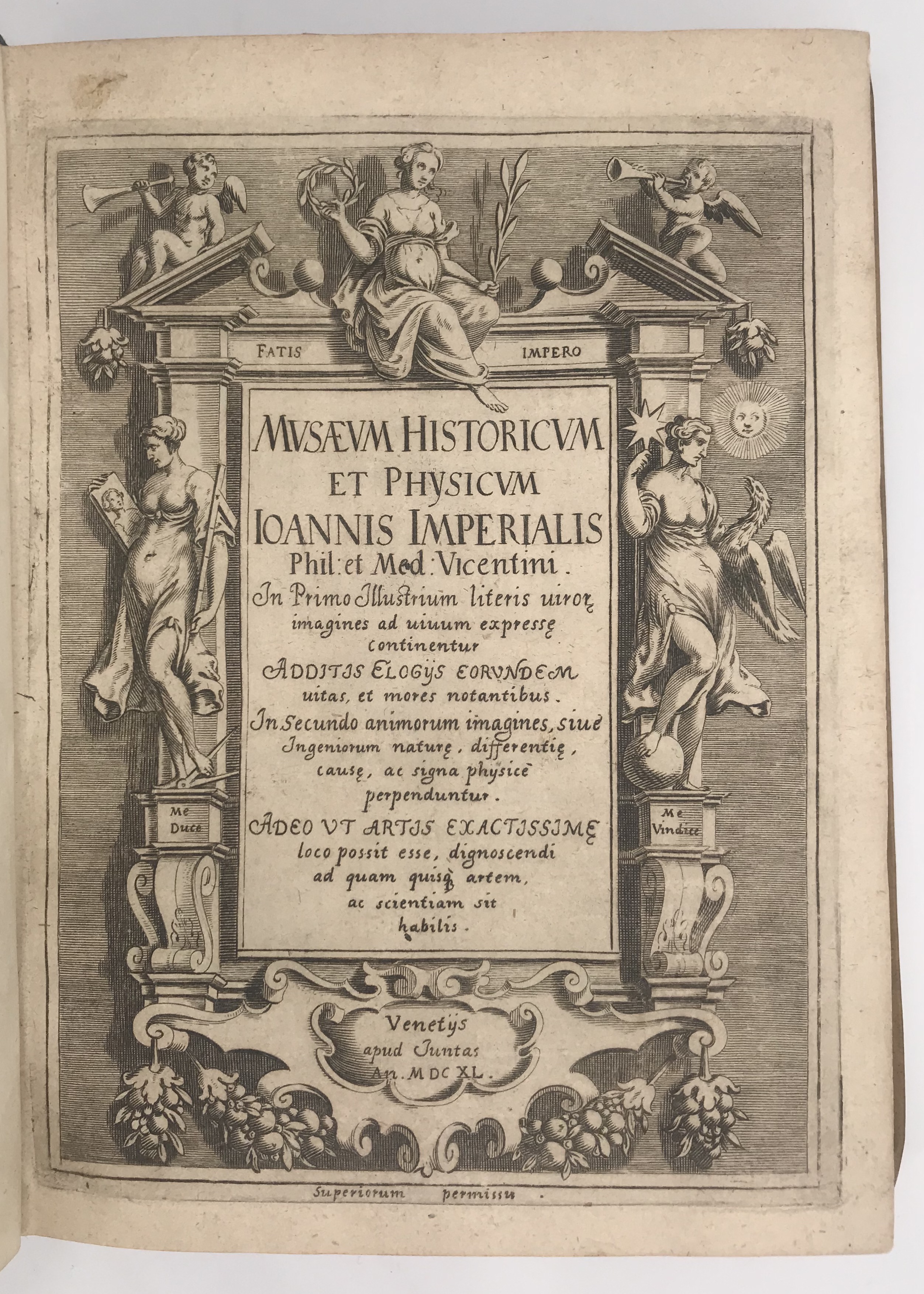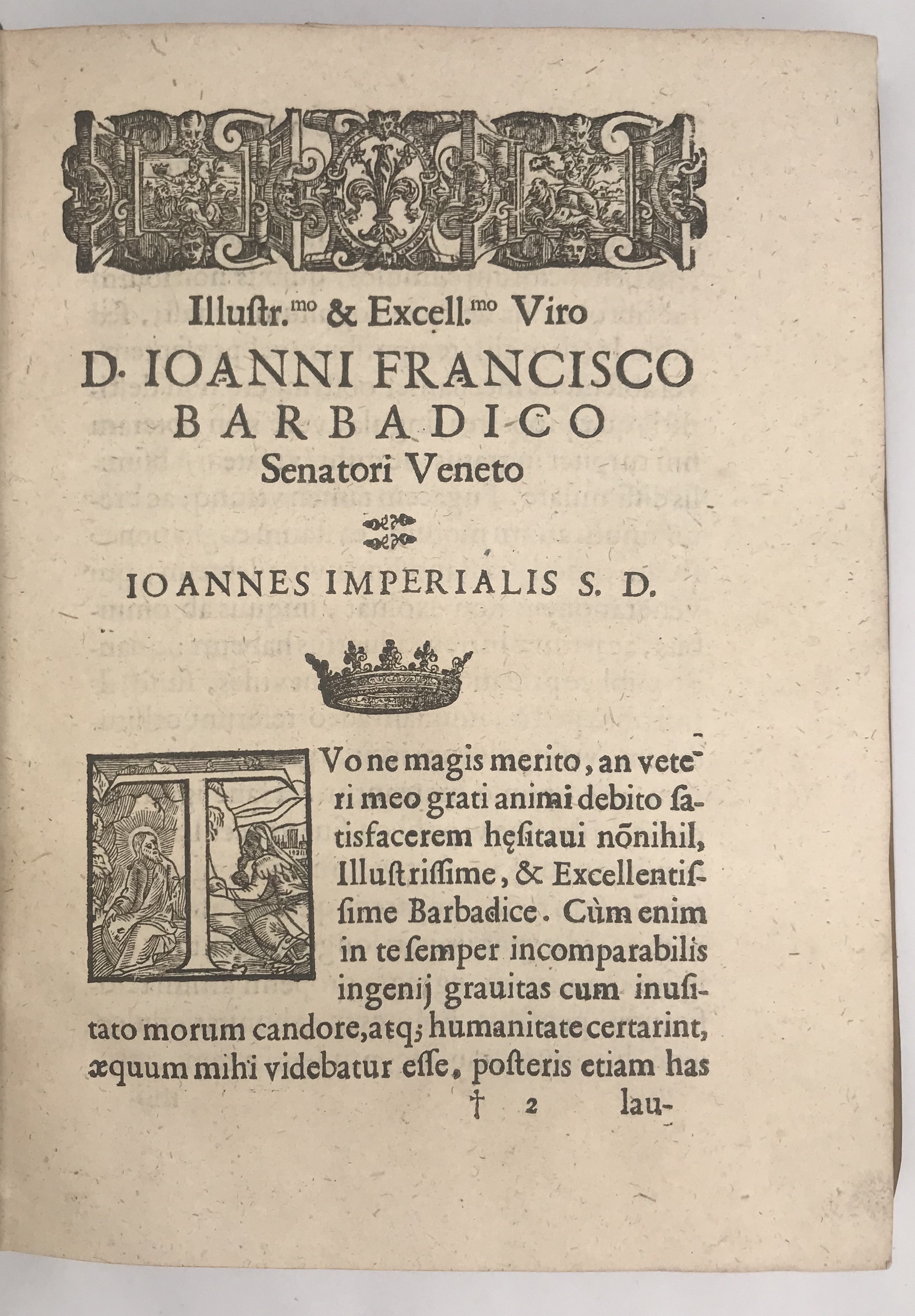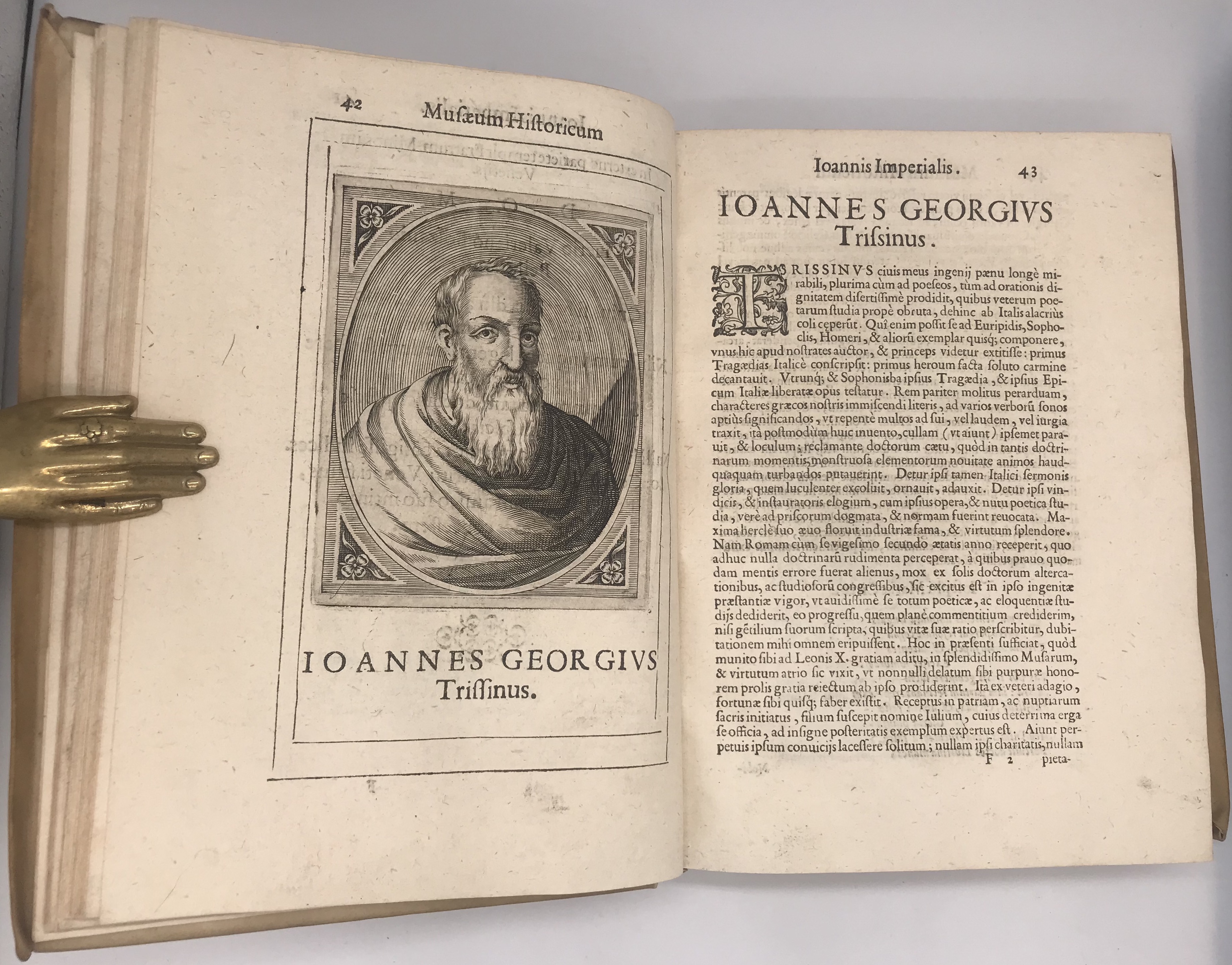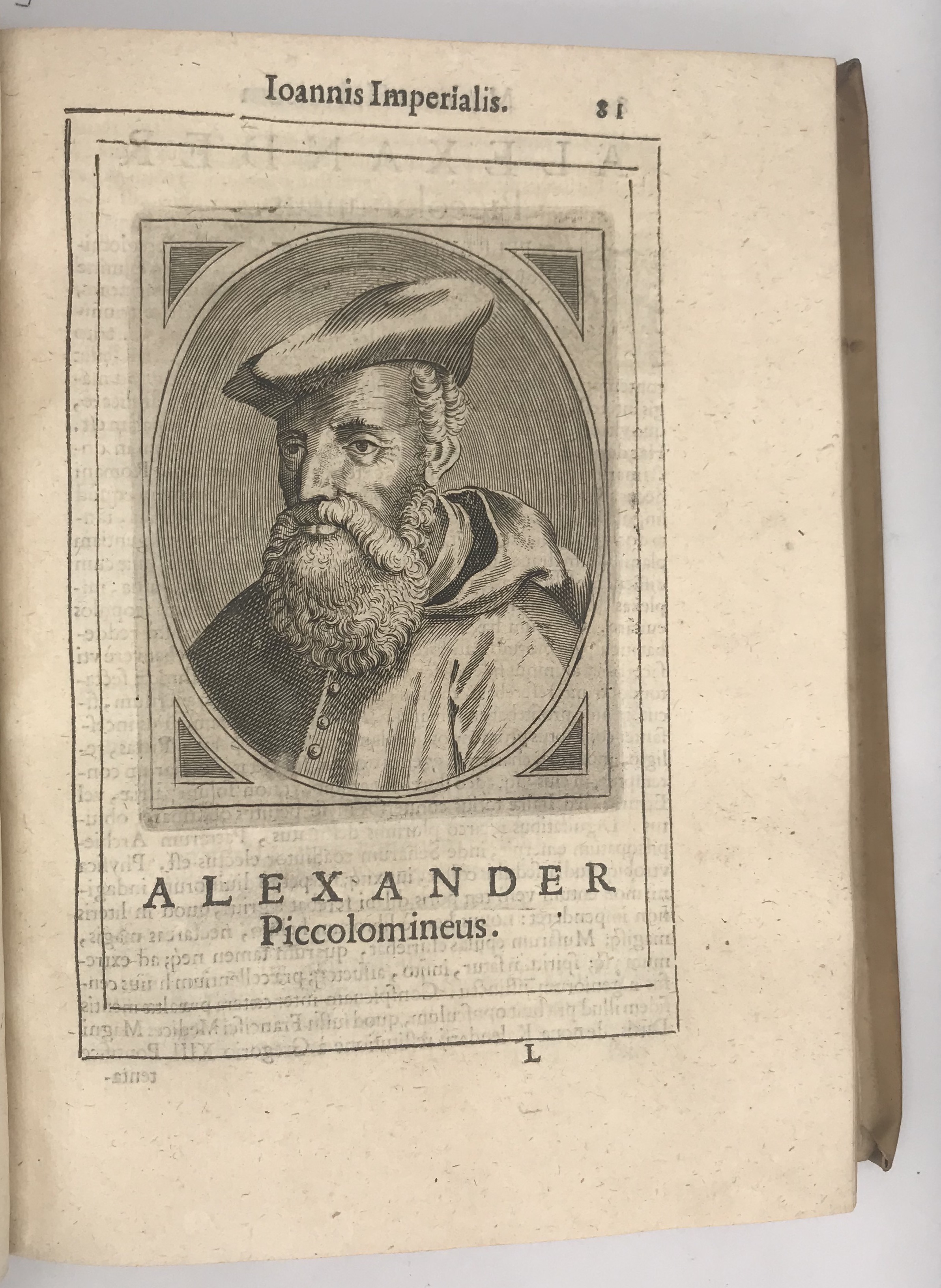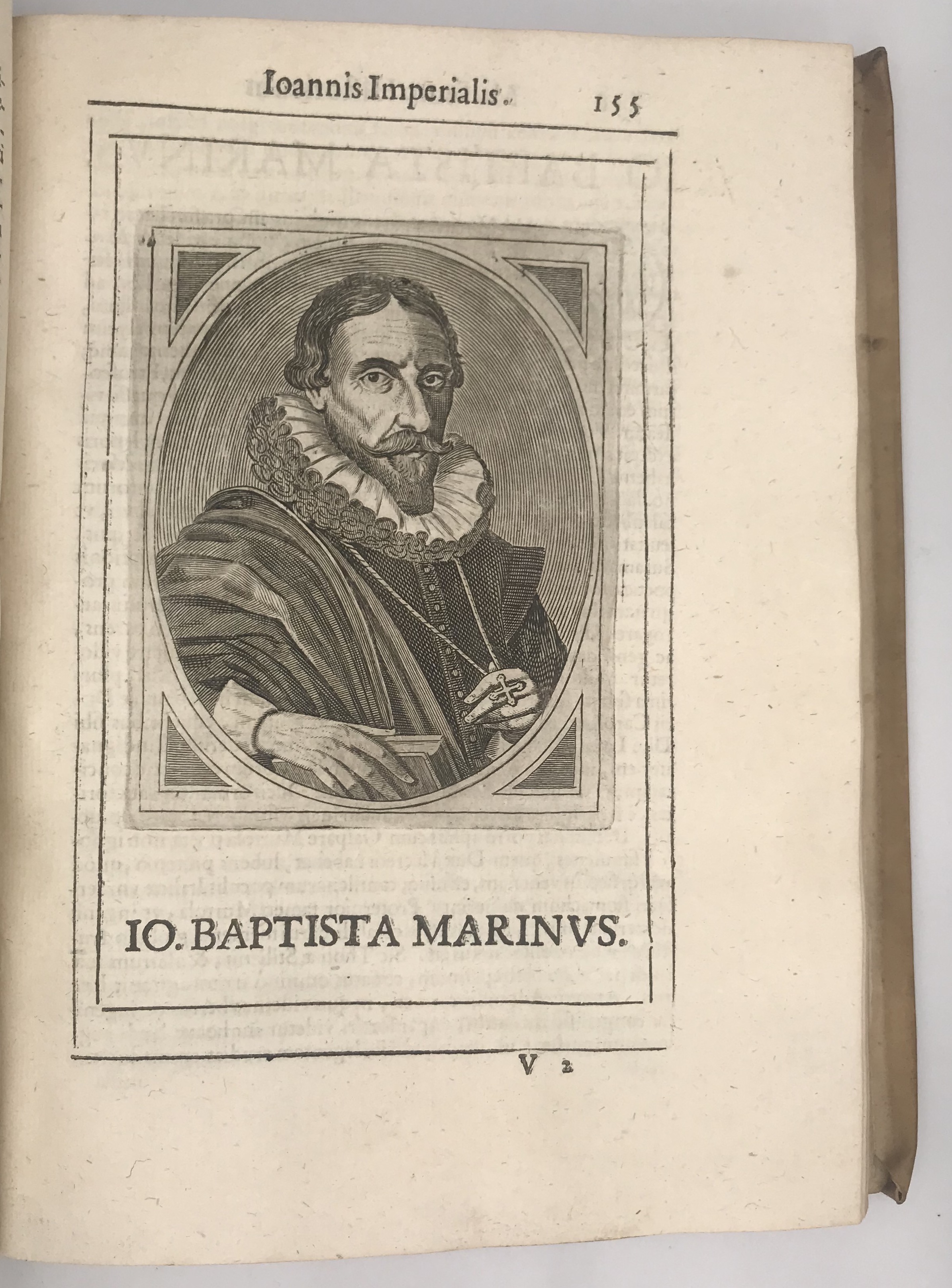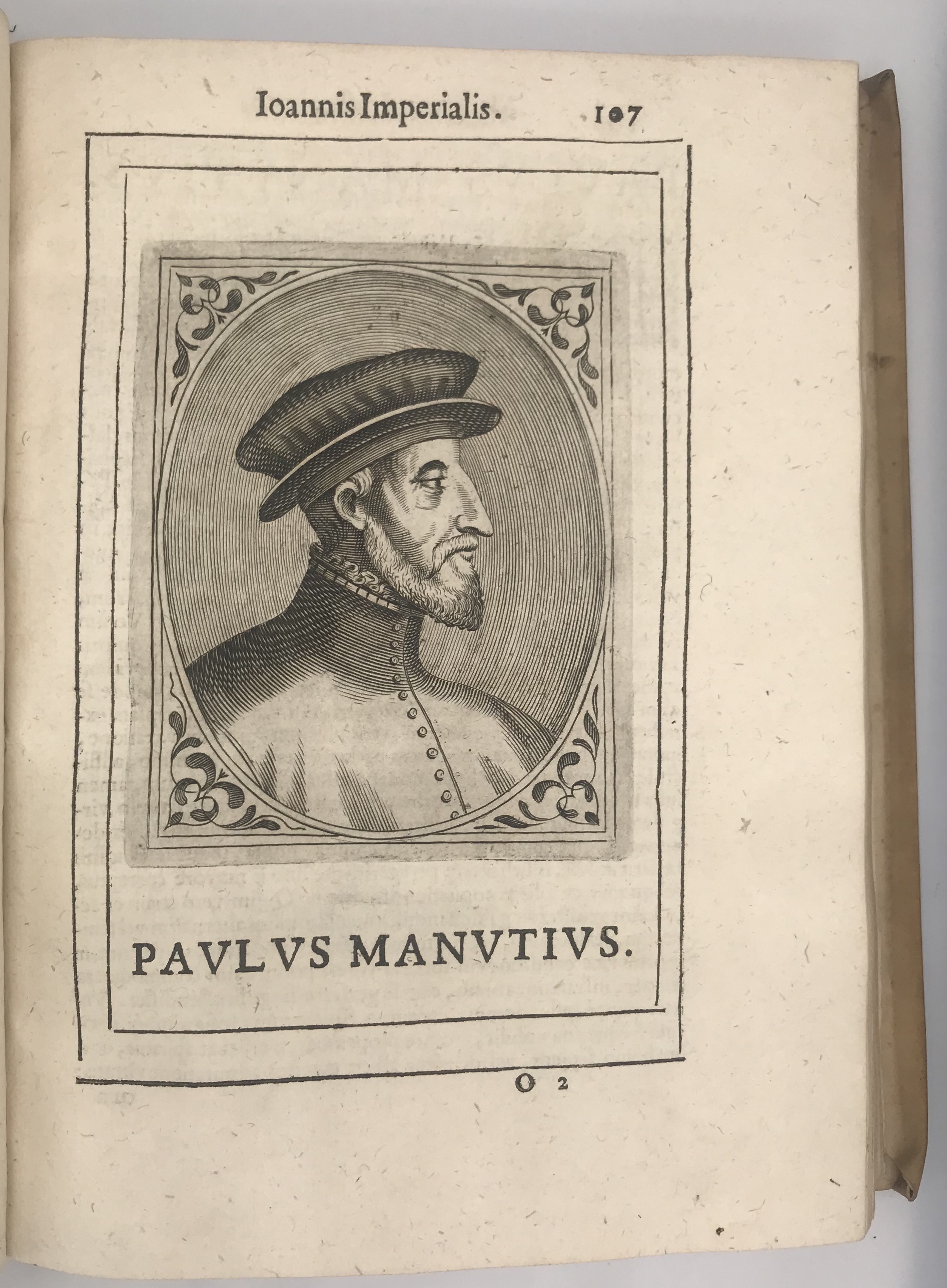IMPERIALI, Giovanni
CELEBRATED PORTRAITS
Musaeum historicum et physicum
Venice, Giunta, [1640]£2,450.00
FIRST EDITION. 4to. pp. (xvi) 212 [misnumbered 122] (viii) 219 (xxiii). Roman letter, some Italic. Engraved architectural t-p with putti, female allegorical figures and grotesques; 57 engraved portraits of worthies within oval cartouches; woodcut printer’s device to last of both parts; decorated initials, head- and tailpieces. Title very slightly dusty, intermittent faint water stain to lower outer corner of first few gatherings, occasional light offsetting, few ll. minimally browned, plate 15 blank as usual. Excellent copy in contemporary vellum over boards, yapp edges, armorial bookplate of Nordkirchen (library of the Dukes of Arenberg) to front pastedown.
An excellent, clean copy of the FIRST EDITION of this celebration of European Renaissance culture. Giovanni Imperiali (1596?-1670) was a physician from Vicenza, much appreciated by Pope Urban VIII and close to the circle of Cesare Cremonini, a controversial philosopher who had been his teacher. The work was inspired by the classic ‘de viris illustribus’ genre recounting the exemplary deeds of great historical or literary figures. The title ‘musaeum’—originally a ‘temple of the Muses’ devoted to the study of the arts—looked back to the Hellenistic Musaeum at Alexandria which, like a university, gathered together the best intellectual worthies. At the same time, Imperiale interpreted ‘musaeum’ in its modern meaning, as a place of material commemoration: since Roman times it had been traditional to celebrate the glory of famous men through images, paintings and marble sculptures as exempla of glory and virtue. The first part presents the ‘imagines ad vivum expressae’—drawn, that is, ‘to the life’, realistically—of major figures of the C16, especially of the intellectual world. The engraved oval portraits of ‘vires illustres’—e.g., Paolo Giovio, Vesalius, Guicciardini, Justus Lipsius, Llull, Tasso, Faber, Aldrovandi and Paulus Manutius (‘arbiter of the Muses and of elegance’)—within an architectural cartouche reproduced the epigraphic nature of monuments, followed by a short text celebrating their achievements. Among the Englishmen and Scotsmen represented are John Barclay, James Crichton (‘The Admirable Crichton’) and Reginald Pole. It is one of the best sources for discovering what the great figures of the arts and sciences of the C16 really looked like. The second part is devoted to the ‘images of the soul’ (‘animorum imagines’) explaining the excellence of human ‘ingenium’, with references to the worthies of the first part, and the particular ‘gifts’ of creativity that individuals have from birth. Most interestingly, Imperiali relied on traditional Platonic, Aristotelian, Pythagoric and Galenic theories to discuss ‘the special importance of fantasy for the artistic ingenium…along with various forms of talent…Thus it became clear for the first time why great painters or sculptors or musicians are not at the same time necessarily great thinkers or scientists or inventors and vice versa’; he also mentioned the melancholia which often plagues artists (‘Humankinds: The Renaissance and Its Anthropologies’, 236-37). An utterly innovative, finely illustrated fruit of the late Renaissance.
The library of the Dukes of Arenberg to which the bookplate refers was situated in the castle of Nordkirchen, which Engelbert-Marie (1872-1949) purchased in 1903.
BL STC C17 It., p. 442; Brunet III, 431; Graesse III, 420.In stock



